Category Archives: ChatGPT
OpenAI GPT Models in 2024: What’s in it for Data Scientists

For data scientists and machine learning researchers, 2024 has been a landmark year in AI innovation. OpenAI’s latest advancements promise enhanced reasoning capabilities and multimodal processing, setting new industry benchmarks. Let’s dive into these milestones and their practical implications for data scientists. May 2024: Launch of GPT-4o OpenAI introduced GPT-4o (“o” for “omni”), a multimodal powerhouse designed for text, image, and audio processing. With faster response times and improved performance across multilingual and vision tasks, GPT-4o offers a great tool for developing advanced AI applications. Early adopters have reported up to 40% efficiency gains in tasks requiring multimodal analysis (Smith et al., 2024). GPT-4o’s ability to process and integrate multi-modal …
Collaborative Writing Use Cases with ChatGPT Canvas

ChatGPT Canvas is a cutting-edge, user-friendly platform that simplifies content creation and elevates collaboration. Whether drafting detailed research papers, crafting visually engaging presentations, or writing professional emails, ChatGPT Canvas has the tools to make your work efficient and impactful. This guide explores leveraging Canvas effectively, tailored for college-level users and professionals alike. Developing Blogs, Articles or Research Essays Research essays, blogs & articless demand clarity, depth, and methodical organization. ChatGPT Canvas streamlines the entire process by offering tools to explore topics, verify facts, and refine your arguments. Its readability and visual integration features ensure that your essays are both compelling and accessible. Topic Exploration: Use web searches to dive into …
When to Use ChatGPT O1 Model

Knowing when to use the LLM such as the ChatGPT O1 model is key to unlocking its full potential. For example, the O1 model is particularly beneficial in scenarios such as analyzing large datasets for patterns in genomics, designing experiments to test novel chemical reactions, or creating algorithms to optimize workflows in computational biology. These applications highlight its ability to address diverse and intricate challenges. Designed to address complex, multifaceted challenges, the O1 model shines when diverse expertise—spanning data analysis, experimental design, coding, and beyond—is required. Let’s delve into these capabilities to understand when and how they can be effectively applied to drive groundbreaking advancements across various fields. Data Analysis …
6 Game-Changing Features of ChatGPT’s Latest Upgrade
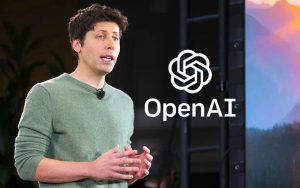
OpenAI has once again set the tech world abuzz with its latest enhancement to ChatGPT, making it a lot easier to use. With a clear focus on user-friendliness and accessibility, this update marks a significant leap forward. Here are the updates on the latest features: Ease of Access: No Sign-Up Required The sign-up barrier has been eliminated, allowing instant access to its ChatGPT. This ensures that access to ChatGPT is just a click away for anyone curious enough to explore it. Customizable Creativity: Choose an Image Style The integration of DALL·E GPT into ChatGPT now includes an option to choose from various image styles, adding a layer of personalization to …
How is ChatGPT Trained to Generate Desired Responses?
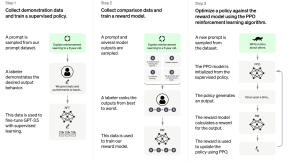
Last updated: 27th Jan, 2024 Training an AI / Machine Learning model as sophisticated as the one used by ChatGPT involves a multi-step process that fine-tunes its ability to understand and generate human-like text. Let’s break down the ChatGPT training process into three primary steps. Note that OpenAI has not published any specific paper on this. However, the reference has been provided on this page – Introducing ChatGPT. Fine-tuning Base Model with Supervised Learning The first phase starts with collecting demonstration data. Here, prompts are taken from a dataset, and human labelers provide the desired output behavior, which essentially sets the standard for the AI’s responses. For example, if the …
ChatGPT Prompts Best Practices: Examples

In this blog, you will learn the best practices you can adopt when writing prompts for ChatGPT. Here is the list: Direct Communication and Efficiency Audience Awareness and Contextual Understanding Interactive and Engaging Prompting Prompt Structure and Instructional Design Natural and Unbiased Interaction Content Creation and Revision Role-Assigning and Scripting Explicit Requirements and Mimicry
First Principles Thinking using ChatGPT

Have you ever wondered why an object such as a chair is shaped the way it is, or why it’s even needed in the first place? What mystery unravels when we dig into the very essence of everyday objects and concepts around us? Navigating through a universe having well-established beliefs and customary wisdom, the hunt for innovative answers and deciphering the secrets hidden behind the everyday becomes not just a curiosity, but a necessity. This is where first principles thinking comes to the rescue. I have posted a detailed blog on First principles thinking – First principles thinking: Concepts & Examples. In this blog, let’s explore how we can utilize …
OpenAI GPT-3 Models List: Explained with Examples
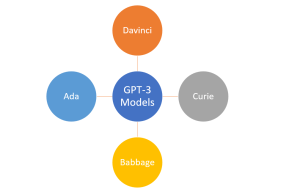
In the ever-evolving landscape of natural language processing (NLP), OpenAI’s GPT-3 models have garnered significant attention for how they could understand and generate human-like text. Different GPT-3 models discussed in this blog can be accessed using APIs and OpenAI Playground. In this blog post, we will delve into the OpenAI GPT-3 models and provide a comprehensive list, along with explanations and examples of their capabilities. Although GPT-3.5 models are more powerful than their counterpart GPT-3 models, it is only these GPT-3 models which are currently available for fine-tuning. Whether you are an experienced data scientist or a curious generative ai enthusiast, understanding these models is crucial in making the most …
LLM Chain OpenAI Python Example
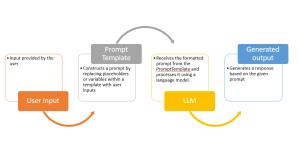
Have you ever wondered how to fully utilize large language models (LLMs) in our natural language processing (NLP) applications, like we do with ChatGPT? Would you not want to create an application such as ChatGPT where you write some prompt and it gives you back output such as text generation or summarization. While learning to make a direct API call to an OpenAI LLMs is a great start, we can build full fledged applications serving our end user needs. And, building prompts that adapt to user input dynamically is one of the most important aspect of an LLM app. That’s where LangChain, a powerful framework, comes in. In this blog, …
Prompt Engineering: Core Principles, Examples
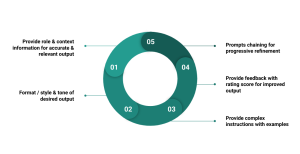
Ever chatted with Siri or Alexa and wondered how they come up with their answers? Or how do the latest AI tools seem to “know” just what you’re looking for? That’s all thanks to something called “prompt engineering“. In this blog, we’ll learn the key concepts of prompts engineering. We’ll talk about what prompt engineering is, its core guiding principles, and why it’s a must-know in today’s techy world. Let’s get started! What is Prompt Engineering? Prompt engineering is the art and science of designing, refining and optimizing prompts to guide the behavior of generative AI models like those built on the GPT architecture. While the underlying AI model might …
GPT Models In-context Learning: Examples
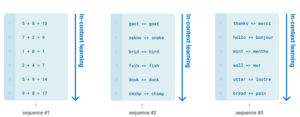
Have you ever wondered how AI models like OpenAI GPT-3 (Generative Pretrained Transformers-3) can generate impressively human-like text? Enter the realm of in-context learning that gives GPT-3 its conversational abilities and makes it extraordinary. In this blog, we’re going to learn the concepts of in-context learning, its different forms, and how GPT-3 uses it to revolutionize the way we interact with AI. What’s In-context Learning? In-context learning is at the heart of these large language models (LLMs), enabling GPT models to understand/comprehend and create text that closely resembles human speech, based on the instructions and examples they’re provided. As the model learns about the context based on the examples provided …
ChatGPT Prompts Design Tips & Examples
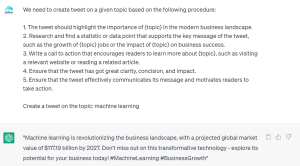
Are you looking to unlock the full potential of ChatGPT? Do you want to learn how to design & create engaging and effective prompts that can help you generate high-quality responses? Look no further! In this blog, we’ll share some expert tips and examples on how to design ChatGPT prompts that get the most out of this powerful language model. As one of the most advanced large language models available today, ChatGPT has the ability to generate informative and engaging responses. But the key is to provide clear instructions and ask right questions if we want to get the best results. That’s where prompt design & engineering comes in. By …
How to Access GPT-4 using OpenAI Playground?
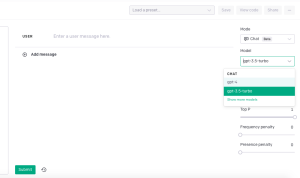
How good it would be if we could access GPT-4 using the OpenAI Playground and harness the groundbreaking advancements OpenAI has made in generating human-like text? OpenAI has revolutionized the field of natural language processing (NLP) with its large language models (such as different versions of GPT-3.5), and the release of GPT-4 has further pushed the boundaries of what’s achievable. In this blog post, we will guide you through a step-by-step process to access GPT-4 model using the OpenAI playground. Step 1: Visit the OpenAI Playground To get started, open your web browser and navigate to the OpenAI Playground website. The URL for the OpenAI Playground is https://playground.openai.com/. Step 2: …
ChatGPT Cheat Sheet for Data Scientists
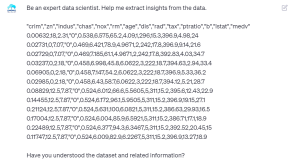
With the explosion of data being generated, data scientists are facing increased pressure to analyze and interpret large amounts of text data effectively. However, this can be a challenging task, especially when dealing with unstructured data. Additionally, data scientists often spend a significant amount of time manually generating text and answering complex questions, which can be a time-consuming process. Welcome ChatGPT! ChatGPT offer a powerful solution to these challenges. By learning different ChatGPT prompts, data scientists can significantly become super productive while generating relevant insights, answer complex questions, and perform machine learning tasks with ease such as data preprocessing, hypothesis testing, training models, etc. In this blog, I will provide …
ChatGPT Prompt to get Datasets for Machine Learning
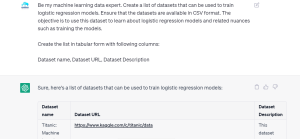
As the field of machine learning continues to expand, having access to high-quality datasets has become increasingly important. Datasets are the foundation of any machine learning project and play a crucial role in determining the accuracy and effectiveness of the resulting model. In this blog post, we will learn about a template ChatGPT prompt that can be used to gather a variety of datasets for different types of machine learning tasks. As data scientists As data scientists, it is recommended that we use a systematic approach to identify and select the right dataset for our machine learning project. This involves considering the specific requirements of our project, such as the …
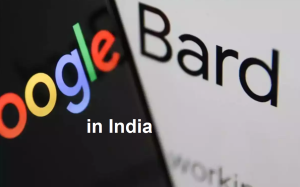
I found it very helpful. However the differences are not too understandable for me